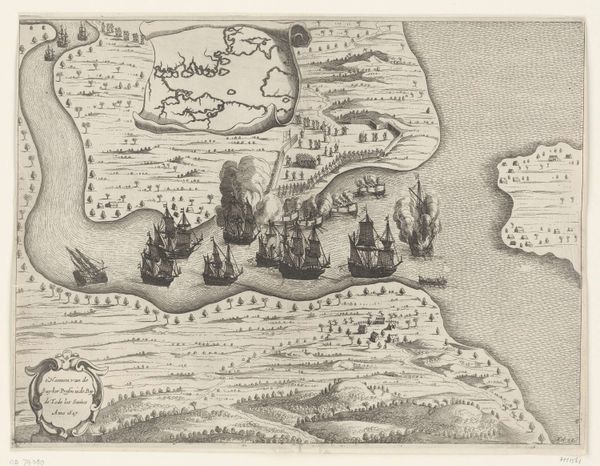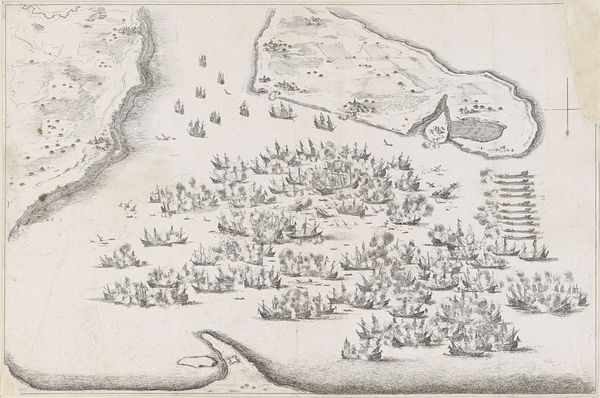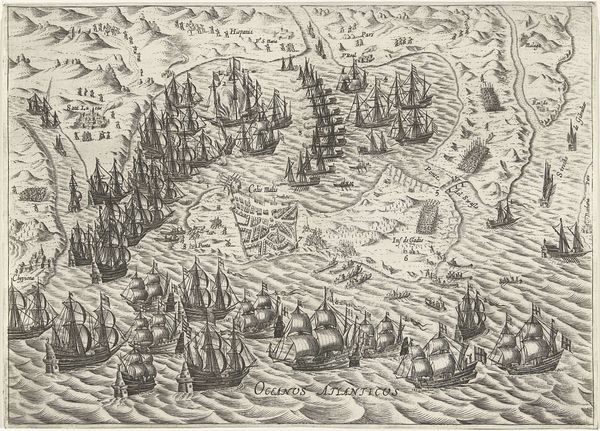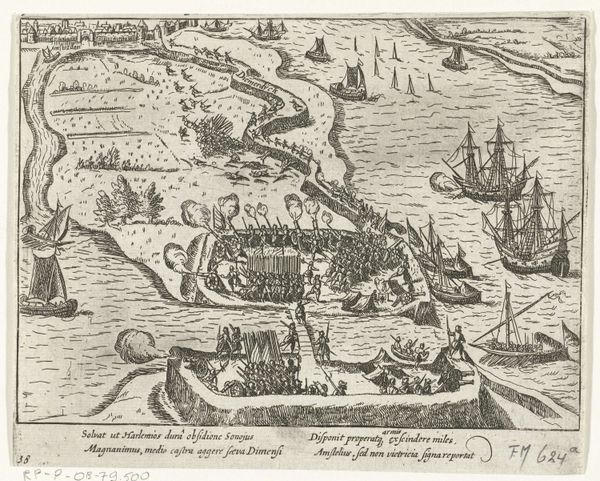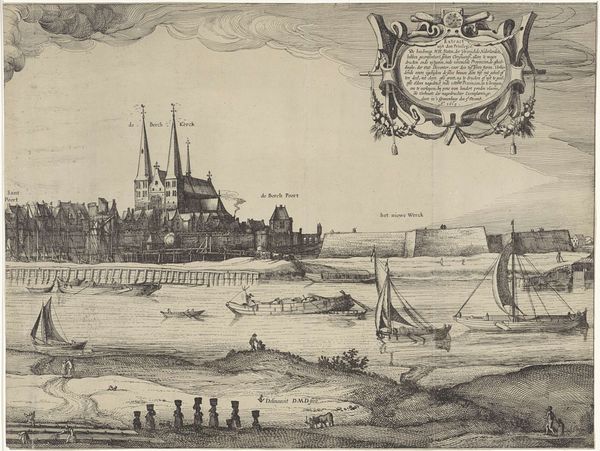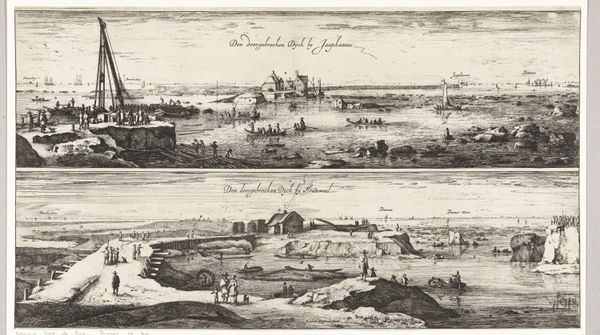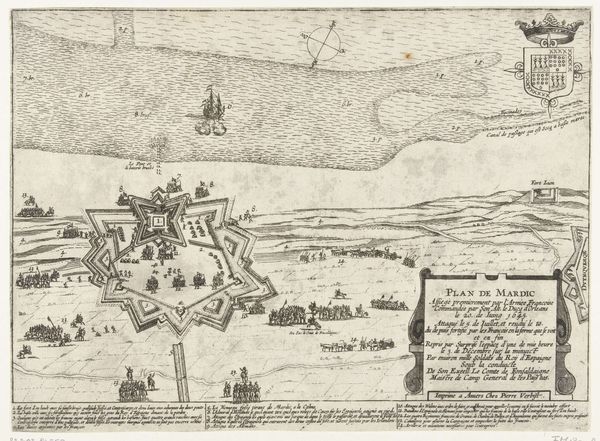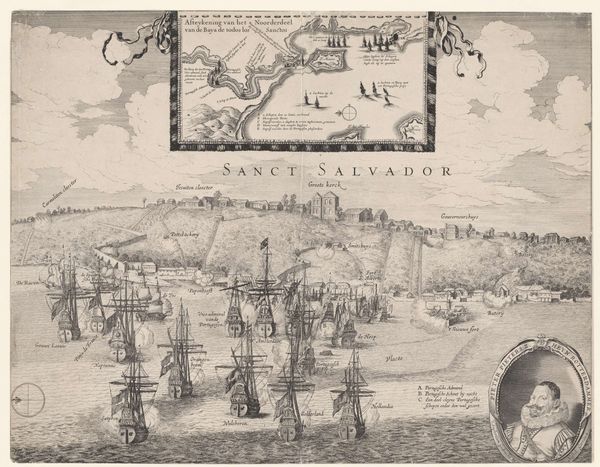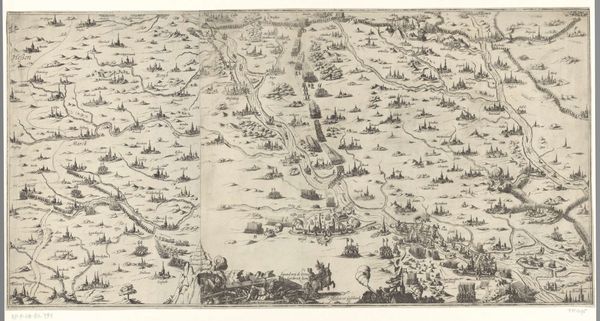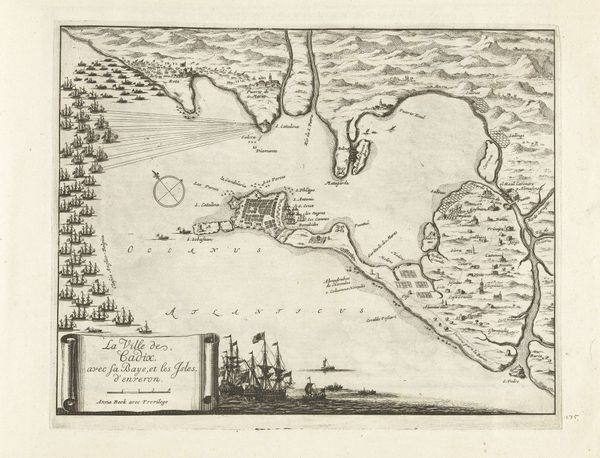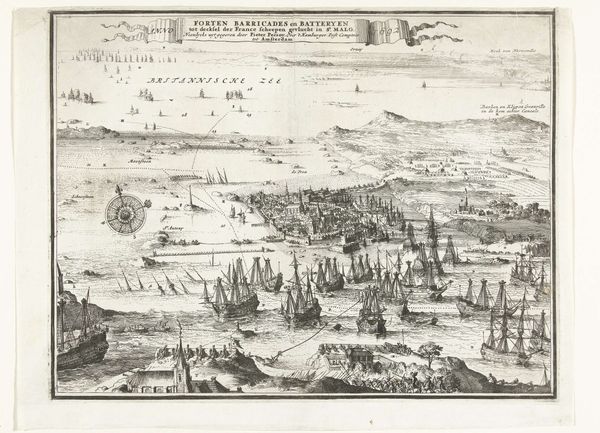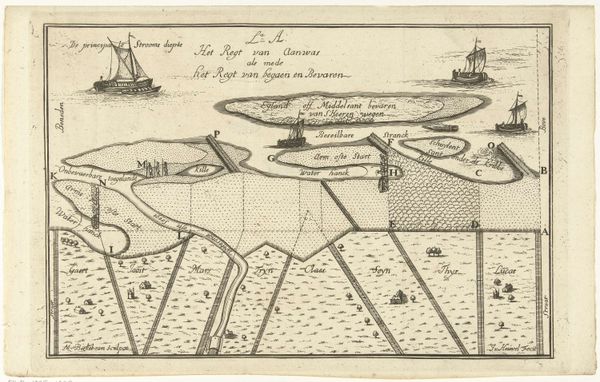
Verovering van Olinda in Brazilië door generaal Hendrick C. Loncq, 1630 1649 - 1651
0:00
0:00
print, engraving
#
baroque
# print
#
old engraving style
#
landscape
#
cityscape
#
genre-painting
#
history-painting
#
engraving
Dimensions: height 279 mm, width 361 mm
Copyright: Rijks Museum: Open Domain
Curator: Today we’re looking at an engraving titled "Verovering van Olinda in Brazilië door generaal Hendrick C. Loncq, 1630." It likely dates from 1649-1651, though the artist remains anonymous. Editor: The detail is astounding. The density of the ships almost overwhelms the scene. It feels like a map, almost like a document detailing the operation. Curator: Precisely. These cityscapes interwoven with the nautical details evoke a moment of fraught negotiation, not only between the Dutch and Portuguese forces but also considering the enslaved populations, whose narratives are rendered invisible within the imagery, of course. Editor: It is remarkable to see how much effort went into carving out such complexity from, presumably, a single metal plate. Do we know much about printmaking techniques during this period, the engraver’s access to materials? The way the sea seems almost churning under this immense naval force must have been intentional, especially in contrast with how much order one can read into this naval operation. Curator: Well, there's this visual language inherent to Dutch Golden Age depictions of maritime conquest. We see echoes of power struggles for land and commerce during that era. Also consider that the prints, though somewhat documentary in nature, are inherently political. I am very interested in unpacking the symbolism, perhaps, within the billowing sails, how they can convey a message beyond the visual aspect. Editor: I imagine the production was deeply collaborative, a network involving not just artists, but metalworkers, printers, and publishers to get this imagery to its intended audience and disseminated within political circuits. One cannot also forget the supply chains that delivered that paper in the first place! Curator: That makes me think how prints, widely distributed, aided in constructing perceptions and consolidating colonial endeavors, almost setting the stage to portray the capture as glorious. What do we really see in the depiction of naval technology? Where does that take us? Editor: Considering labor, materiality, consumption... there’s this very active market these supported in terms of craftsmanship, shipping, and trading which reflects more on social patterns. This small piece of paper condenses a much broader web. Curator: A testament to the interconnected nature of art and socio-political fabrics, definitely a starting point to approach historical cartographies of power. Editor: Indeed, making us reconsider the material forces embedded in a single work that far transcends aesthetic considerations alone.
Comments
No comments
Be the first to comment and join the conversation on the ultimate creative platform.
